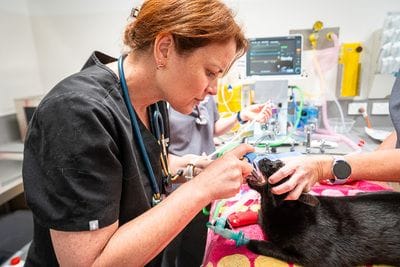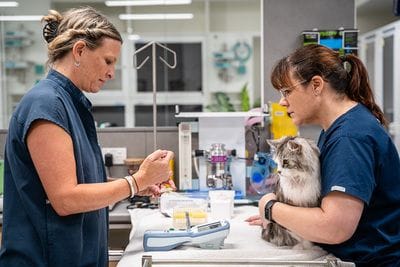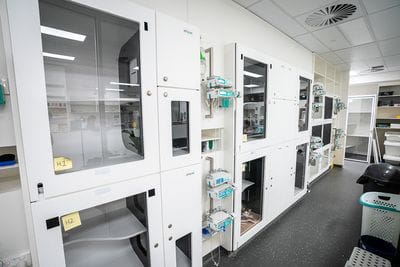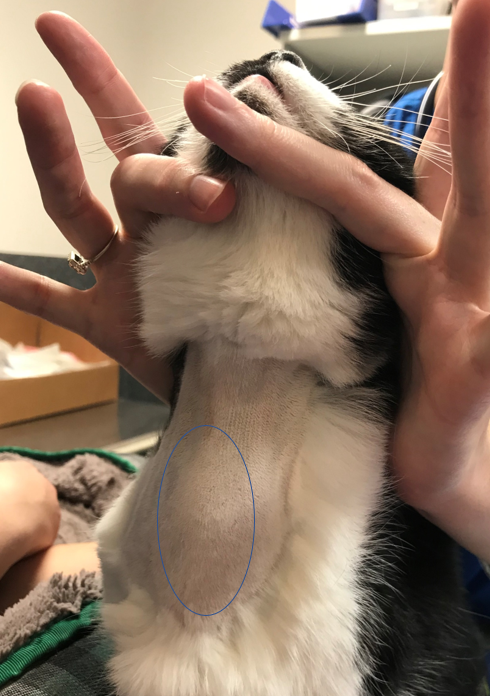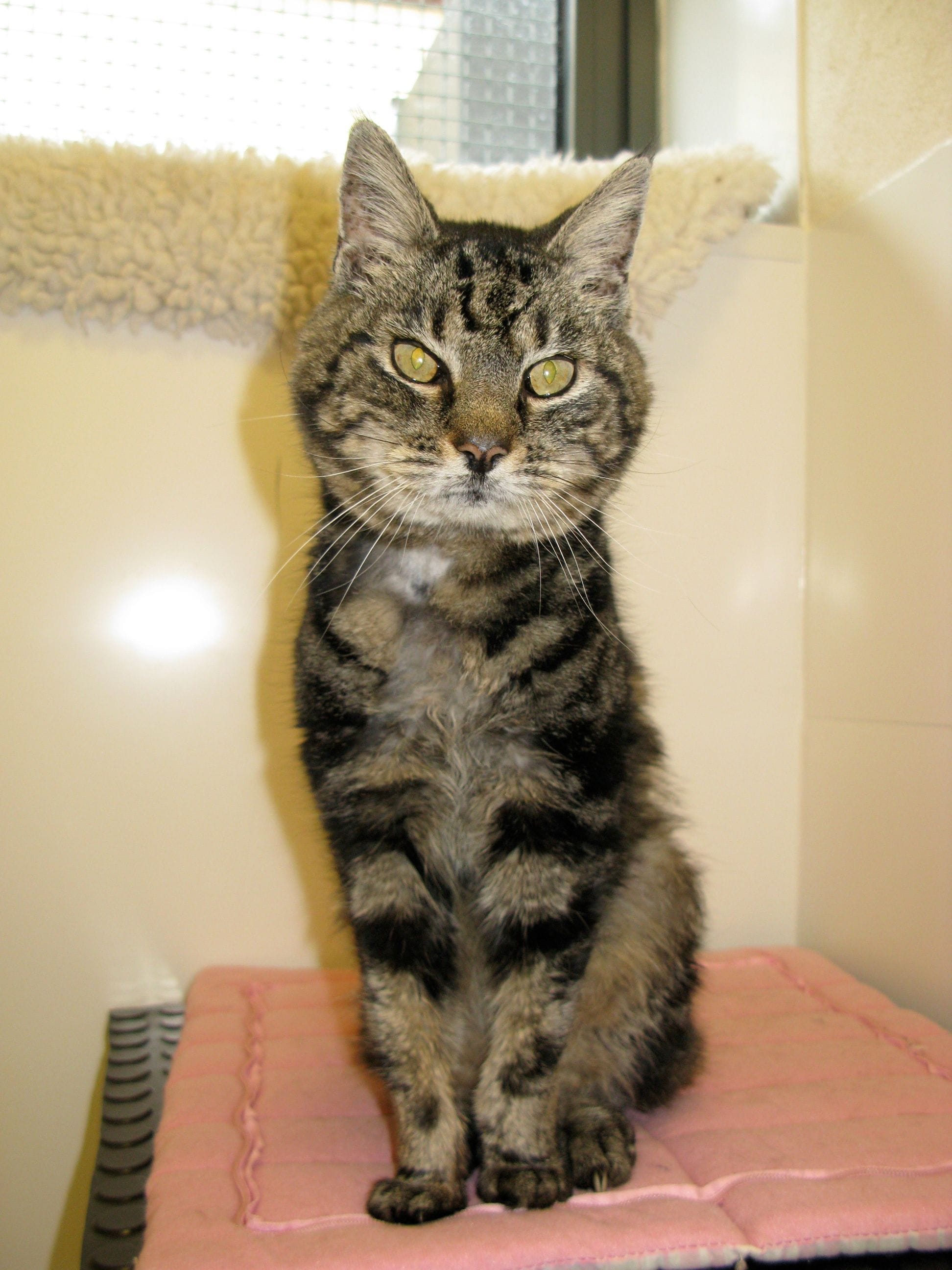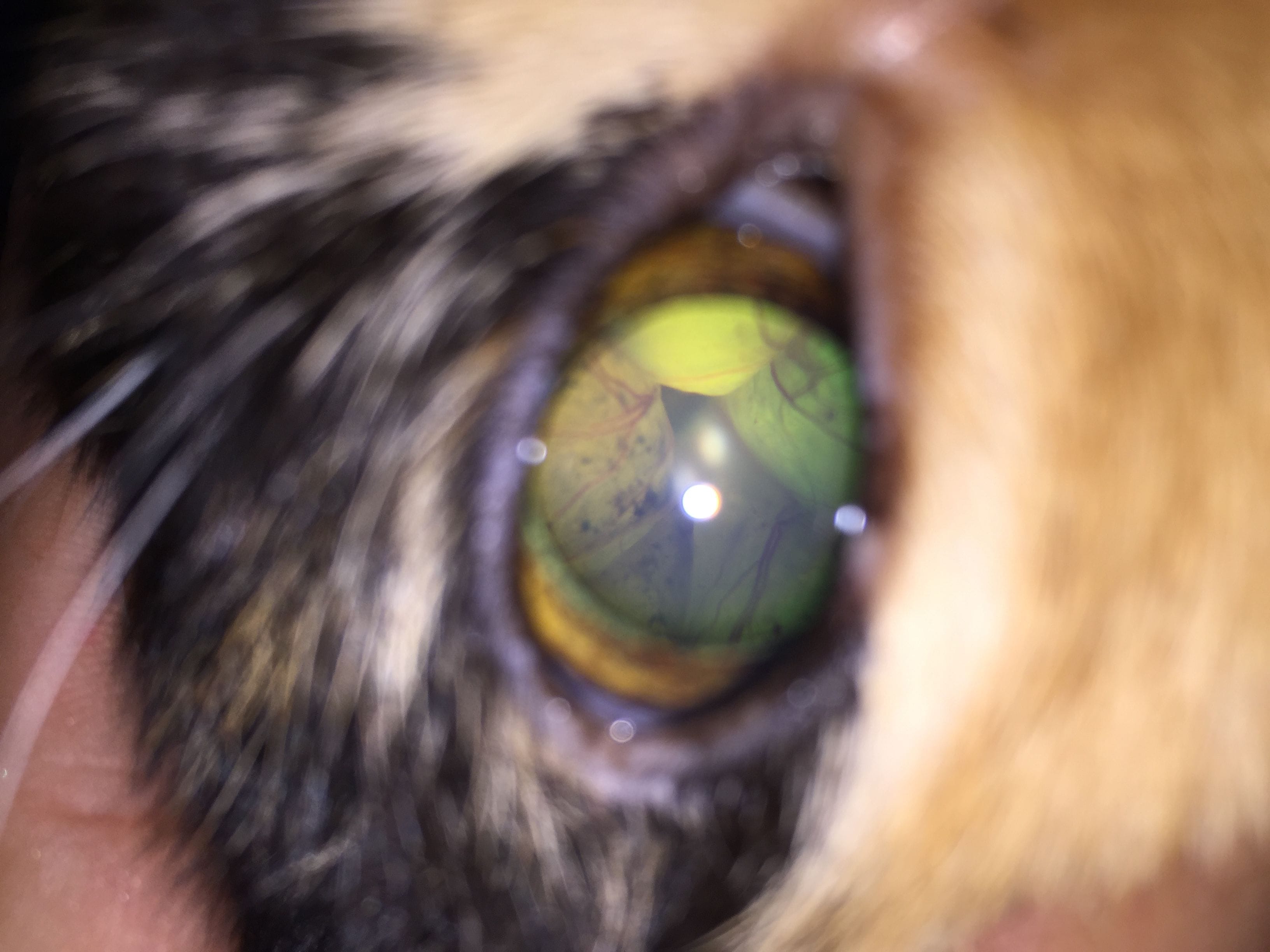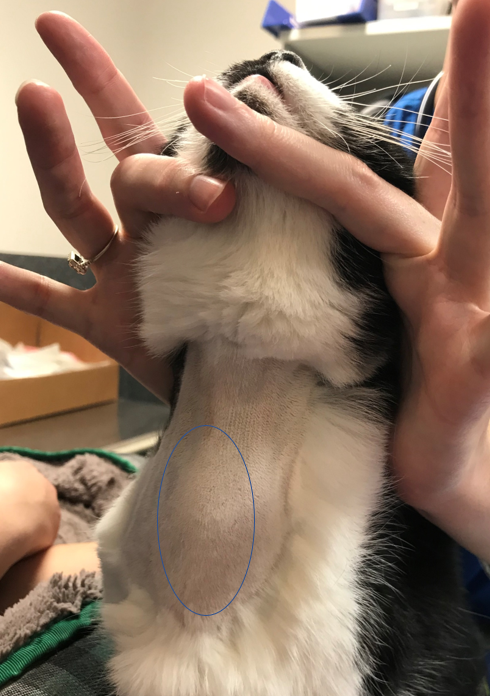Hyperthyroidism causes serious health consequences such as heart disease and weight loss. Common signs are increased hunger, weight loss, vomiting and behaviour changes such as crying and agitation.
Hyperthyroidism is a life-threatening condition, however it is treatable and curable in many
cases.
The gold standard treatment for cats (and humans) with hyperthyroidism is radioactive iodine treatment. This is the administration of a single oral capsule of radioactive iodine. This treatment has few, if any side effects and thyroid hormone levels are normal in 80% of cats by 4 weeks and 95% of cats by 6 months.
Below are some frequently asked questions about hyperthyroidism.


